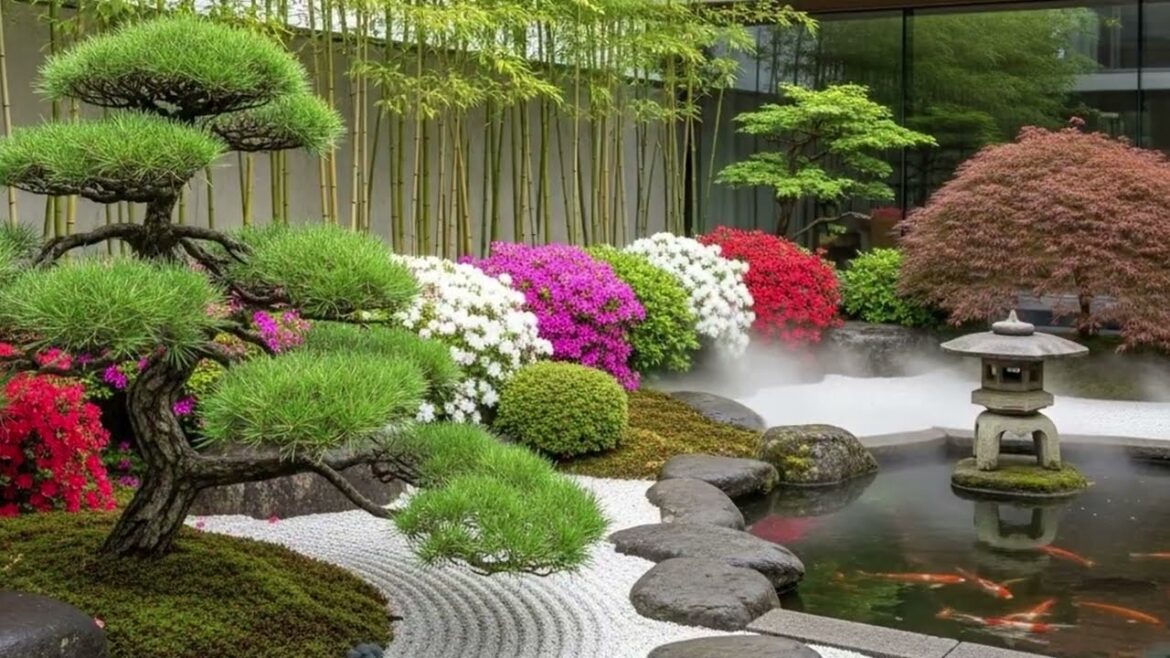Description
Step into the world of Japanese gardens — spaces where simplicity, harmony, and timeless beauty come together. 🌿✨
In this 15-minute journey, we explore the hidden philosophy of Wabi-Sabi, Zen stillness, and the art of imperfection. We uncover the design secrets behind stones, moss, bamboo, and water — each carrying deep symbolism. And we learn how to bring this sense of tranquility into our modern lives, even with low-maintenance ideas for small spaces.
Whether you are a garden enthusiast, a seeker of peace, or simply curious about Japanese aesthetics, this video will guide you into a sanctuary of stillness.
If you enjoyed this video, don’t forget to like, subscribe, and share 🌸
#JapaneseGarden #ZenGarden #WabiSabi #GardenDesign #Tranquility #Mindfulness
Imagine a small garden in front of your home. Not crowded, not full of flashy colors, just serenity, balance, and space to breathe. This is the beauty of a Japanese garden, a living artwork that blends silence with simplicity. Today we will explore how to create a Japanese garden that is beautiful, simple, and lowmaintenance. A garden not only for decoration, but as a sanctuary that brings peace into our busy lives. [Music] Chapter 1. The philosophy of the Japanese garden. A Japanese garden is not just about planting flowers or arranging greenery. It is a reflection of a philosophy of life, simplicity, calmness, and meaning. In Japanese culture, the garden is a place of meditation, a place where time seems to move slower, a space to find harmony between human beings and nature. There is a principle called ma, the beauty of empty space. In Japanese design, empty space is as important as what you see. This means you don’t need to fill every corner with plants. In fact, emptiness itself is what makes beauty more profound. For those who seek a beautiful garden without demanding maintenance, this philosophy is perfect because the more minimal the design, the easier it is to care for. [Music] Heat. Heat. [Music] Chapter 2, key elements of a Japanese garden. Now, let’s talk about the essential elements. There are five things that define a Japanese garden. Stones and gravel, symbols of mountains and rivers. Large stones are placed carefully as if they’ve always been part of the land. White gravel can be smoothed or raked into wave patterns. This is called kare sansui or the dry garden. Almost no maintenance is required, only occasional raking. Water is the symbol of life. You don’t need a large pond. A simple stone basin with a bamboo spout is enough. The gentle sound of dripping water can calm the mind. Simple greenery, not flashy flowers. Choose dwarf pines or bamboo or a small Japanese maple. Evergreen plants keep the garden alive all year round with little care. Moss or ground covers. Moss grows naturally in shaded moist areas. If moss is not suitable in your climate, use substitutes like mondo grass or creeping time. Stone ornaments, lanterns, small pagotas, or bamboo fences. They add a Japanese touch without adding work. [Music] [Music] Heat. Heat. [Music] [Applause] [Music] [Music] [Music] Chapter 3. Lowmaintenance plat choices. One of the most common mistakes is planting too many varieties. But a Japanese garden teaches simplicity. Choose just three to five plants. For example, dwarf pine symbolizing strength and longevity. Bamboo representing resilience and flexibility. Aelia adding a seasonal touch of flowers. Japanese maple. Brilliant red and orange leaves in autumn. Dwarf juniper, evergreen, requiring almost no care. Here’s a key tip. Always choose plants that fit your local climate. Not every Japanese plant grows everywhere, but the principle remains evergreen, slow growing, and easy to maintain. [Music] [Music] [Music] [Music] [Applause] [Music] [Music] [Music] [Music] Chapter 4, design and layout. Now imagine we start designing the garden. Say you have a small front yard about 4x 6 m. How do we turn it into a simple Japanese garden? Create a focal point. This could be a large stone, a small tree, or a stone lantern. Let the eye naturally rest on that point. Use natural lines. A stepping stone path doesn’t need to be straight. Let it curve gently as if guided by nature. Layer the elements. Low plants in front, small trees at the back. Balance them with stones for structure. Leave empty space. A section of gravel or open ground is part of the design. Remember, emptiness is beauty. [Music] Hey. Hey. Hey. [Music] [Music] Chapter 5, lowmaintenance care tips. So, what does lowmaintenance actually mean in a Japanese garden? It means you don’t have to work on it every day. Here are some simple tips. Place weed barrier fabric under gravel to keep weeds away. Choose slow growing plants that rarely need pruning. Install drip irrigation or soaker hoses for effortless watering. Pick perennials instead of seasonal flowers. With these practices, your garden will stay beautiful all year round with minimal effort. [Music] A Japanese garden is more than just a green space. It is an invitation to slow down, to be still, and to experience life more deeply. And the good news is you don’t have to be a garden expert to enjoy it. With a simple design, natural elements, and the right plant choices, you can have a Japanese garden that is both beautiful and lowmaintenance. If you enjoyed this guide, don’t forget to like, subscribe, and share this video so more people can discover the peace of their own Japanese garden. Until next time, may your home garden become an oasis of calm.


2 Comments
Very nice designs, I love Japanese gardens, thank you for the work you put into this video ❤
Thanks for sharing. 😍🤩❤️